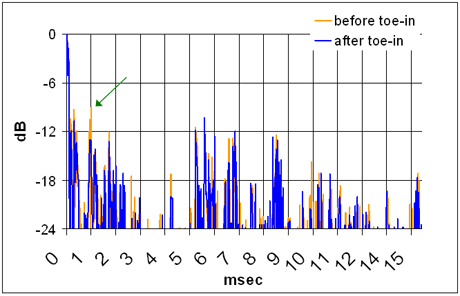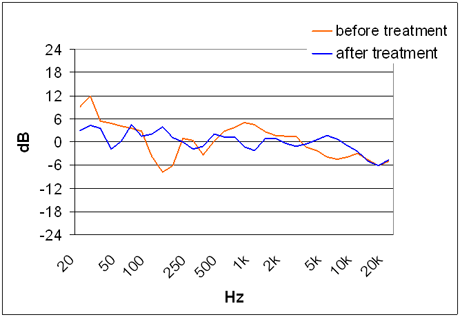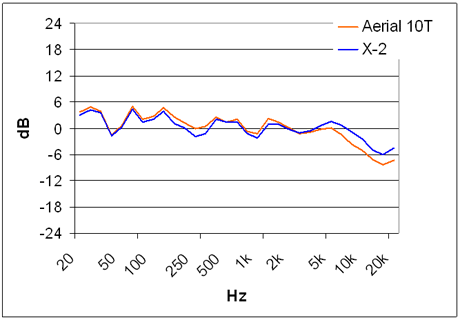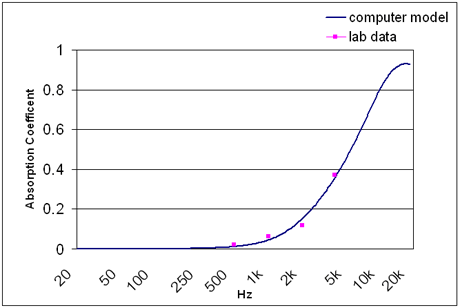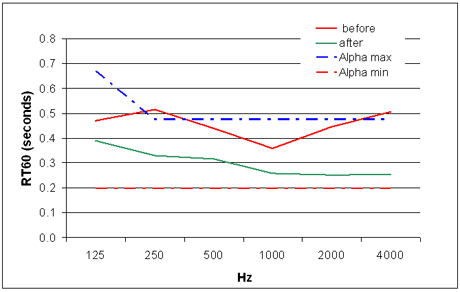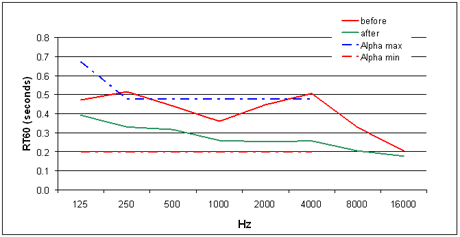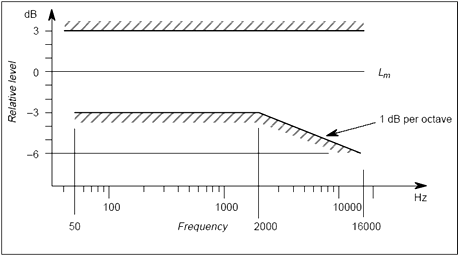 |
|
| February 15, 2006
The Music Vault was complete, and I was sitting in my chair with my reference stereo system set up, finally listening to music. I was enjoying, on the one hand, incredible satisfaction that I could play music in my home with a degree of accuracy and realism several notches above anything I had heard before -- in my home or anywhere else: The Music Vault was simply the most stunning sound-reproduction upgrade I’d ever experienced -- far greater than any single component change I’ve made to my system through the years. This includes the significant move to my current reference loudspeaker, the Wilson Audio Specialties Alexandria X-2, from my previous reference, Wilson’s X-1 Grand SLAMM Series 3. From the opening bars of the first discs I played, I was confident that I was in uncharted territory. I was hearing a closer approximation of the real thing -- a sound that simply screamed jaw-dropping focus and unlimited, utterly clean dynamics. At the same time, there was an easiness to the presentation that completely relaxed my mind and soul. I chuckled out loud with contentment. For the obsessive audiophile, however, moments such as this raise more questions than they answer. Listening in the Music Vault that first night made me rethink being an audiophile -- heck, even an equipment reviewer -- at least in the classical sense. In a moment, I realized what a true order-of-magnitude improvement could mean to the art of reproduced sound, vs. what, in the past, I’d thought were significant improvements. I had to conclude that, compared with a room-acoustics upgrade such as the one I was experiencing, most equipment upgrades produce only baby-step results. The acoustic output of the system is what we hear. Seem obvious? Then why are acoustics historically given such short shrift by audiophiles? It is the acoustic output of a system in a real room that is by far the most critical determinant of sound quality, not individual electronic components and cables and their "sonic signatures." Perspective As we wound up the third weekend in January -- the culminating point of my room design and construction -- acoustical engineer Terry Montlick and I had an interesting discussion. Terry made an apt analogy that stuck with me, and which I paraphrase: You cannot truly grasp how a car drives without putting it on a road. The way the car interacts with the road determines, to a great extent, the driving experience. In much the same way, a stereo system’s interface with the room determines the listening experience. Profound words to this audiophile. We don’t listen in anechoic chambers; we listen in rooms, or to rooms, as the case may be. I’ve learned that in some cases even radically different speakers can measure similarly because of the room they’re in. Below are the details of how my new room came out and a new attitude surfaced, sprinkled with a few tidbits of advice that might just help you achieve a better quality of sound in your room. Music Vault complete The accompanying photos show 14 polycylindrical diffusers, four corner bass traps, and three sound-absorbing panels, installed in a room 23’ 6" wide x 20’ 1" long. I was concerned that the wall-mounted diffusers would adversely intrude on the room’s perceived interior space, creating a closed-in, claustrophobic feeling. I needn’t have worried. Although the feel of the room is cozy, it’s still spacious and interesting -- a far cry from its pre-treatment sterility. A few cosmetic touches helped, such as the maple trim on and between the diffusers. Randall Smith, who supervised the construction, had the idea of mounting the wall outlets on the trim pieces behind the equipment, creating a nice visual effect. Although my wife and I discussed painting the diffusers, the color of the material actually matched the wall color quite well. And with a well-matched fabric for the bass traps and wall panels, the décor turned out to be just right for a man’s listening room. The measurements The measurements in many ways only confirmed what I already knew from listening: The room was dramatically improved over its untreated state. Still, the numbers would provide the objective data to support the subjective listening tests -- and would be very interesting to analyze. Measuring equipment in tow, we began playing pink noise in earnest. An impulse-response measurement can reveal problematic early reflections. If any are too high in level, within about the first 15 milliseconds (ms) from the first sounds arriving they can impair razor-sharp imaging of the soundstage. In graph 1 you see the first 15ms. One early reflection, at 1ms (green arrow), is about 1dB too high. Investigation of this had Terry questioning whether it was simply a reflection of sound off the listening chair’s back, which was naturally very close to the ears/microphone position. I moved the chair out of the picture and Terry remeasured. That turned out not to be the issue: An early peak did drop out, but was too low in level to be audible; the problem peak remained. Terry finally tracked down the offending reflection to the top pair of sidewall polycylindrical diffusers, which were mere inches away from the Alexandria X-2s’ tweeters. We temporarily covered the diffusers with pieces of rigid fiberglass that acted as absorbers, and another measurement confirmed that they were indeed the problem. We discussed alternatives to fix this, including adding a small permanent patch of absorption on the diffusers’ surfaces (yuck). Instead, we toed-in the speakers less than half an inch more, while remaining within Wilson’s specs. It worked!
From the impulse response, Terry determined the 1/3-octave frequency response of the system. We adjusted the speaker positions forward and back in equal increments, but the best locations turned out to be close to where originally determined by the listening tests and Wilson Audio’s recommendations: 28" from the front wall, 64" from each sidewall, 11’ 6" apart, and 13’ from the listener. The response graph is admirably flat to 10kHz, +/-3.4dB after treatment, but then falls off 6.9dB at 16kHz. Was that the X-2s? Sacre bleu! We swapped in a set of Aerial Acoustics 10Ts to cross-reference; they, too, showed the drop off at 16kHz.
Terry surmised that the dip in the response at the highest frequencies (16kHz) was due to overabsorption. It turned out that both the frequency-response and reverberation-time curves drop off at the highest frequencies, indicating a direct correlation. The question remained: What in the room was still a constant source of very-high-frequency absorption, both before and after room treatment? The really thin Berber carpeting! "Thin, porous materials, like carpet, absorb primarily at high frequencies," according to Terry. "Generally, the higher the frequency, the more they absorb. And there is a whole lot of carpet surface area in the Music Vault. "But we don’t have hard acoustical data on very-high-frequency absorption of construction materials. The highest frequency measured in the lab is usually only 4kHz. So I built a computer model of 0.25"-thick pile carpeting, using a fairly low pile density that approximates that of the room. I used equations developed by Allard and Johnson in 1993, adjusting the parameters so as to obtain a good fit with existing lab data. "The absorption coefficient (0 means no absorption, and 1 is complete absorption) takes off at very high frequencies. According to my model, it reaches a high of 0.93 at about 16kHz. This agrees very nicely with both the frequency-response and reverberation-time measurements."
Presented next are the Music Vault’s reverberation times. Terry states that the optimum RT60 for a room the size of the Music Vault is between 0.20 and 0.48 second. The Music Vault averaged 0.30 second after acoustical treatment. Terry explains: "Reverberation time naturally goes up with room size, because it takes longer for sound to decay in larger rooms. There are fewer wall reflections over the same time period in a large room compared to a small room. Amazingly, our brains appear to compensate for this, so the room reverberation sounds ‘normal’ for the room size. And yet this sophisticated mechanism still preserves a perception of the relative liveness or deadness of a space. A 1-second reverberation time for a very large concert hall would likely make that room sound too dead. But the same 1-second reverberation time in a much smaller space, such as a home listening room, would sound too live." The optimal RT60 can even vary with the type of music played; modern, fast-paced, complex music needs somewhat lower RT60 times. Listening tests confirmed that Terry’s assessment was correct, however: "My listening tests of old-warhorse Bach and Beethoven showed the room’s reverb wasn’t too low. The tracks I played sounded simply amazing."
In the winter of 1997, the European Broadcasting Union specified their recommendations for "loudspeaker presentation" in a listening room. In a document titled Subjective Assessment of Audio Quality, the EBU stated what audiophiles have always known: "the only sufficient method of assessing the balance of features which contribute to the quality of sound in a programme is by listening to it." With this assumption, the EBU developed a set of measurement criteria for listening rooms. Their research concluded that, essentially, a room that meets their guidelines has sufficient neutrality to allow for "consistent subjective assessments to be made." Rooms used by BBC Research and Development, Harman Specialty Group, Deutsche Telekom Berkom, and many others meet the EBU criteria. The Music Vault deviates just 0.9dB from the frequency-response standard set by the EBU, and meets or exceeds the EBU criteria in other areas. For example, reverberation times are within the range of the recommendations, as are early reflections.
What’s left? Are future improvements possible? An audiophile’s quest for perfection never ceases. The carpeting on the stairs could be acting as an additional "treble trap." According to Terry, simply blocking off the stairway with a door at the room’s entrance could help achieve the ideal +/-3dB response curve. Adding damping to the open ends of the diffusers might clean up any resonances they may introduce into the room. Some projects never quite end. What I learned about system acoustics Studying the final measurements taken in the Music Vault is a more scientific endeavor than many audiophiles care to undertake. To others, the science is fascinating. Regardless of which camp you’re in, the science behind the in-room measurements presented here has incredibly important implications if you care about sound. Consider this: you listen to a system housed in a room, not a montage of sounds created by a collection of components. Looking at a visual representation of the acoustical output of a system in a room bypasses in significance many of the individual measurements you could perform on individual components. In many ways, acoustical measurements simply cut to the chase, giving you a graphical representation of what you actually hear from your components at your listening position in your room. What could be a more valid study of the correlation of what you hear with the way something measures? Of course, there are bound to be many things not measured for this article that also matter. But might this not be the best way to start? Forgive my exuberance. I think anyone setting up a serious stereo system who is not measuring their room/system and making improvements and adjustments based on those data is avoiding a critical tool. The way I am using my Wilson Audio WATCH Dog Series 2 subwoofer for active bass-mode cancellation to flatten a low-frequency mode (explained in Part Two of this series) is a prime example of a technique that could be realistically applied only after I’d looked at measurements and acoustical modeling of the room. And what about cost? The total cost of the materials in my room-treatment plan is reasonable, especially considering my current equipment outlay, and an average room will likely require a more modest amount of materials. The value isn't in the materials, though, but the expertise in where to place them. A professional acoustical engineer is priceless, but the cost of such services is based on your level of involvement and can be quite reasonable as well. A new day Coming to terms with my room’s acoustics has been a journey of exploration. I’ve learned a lot from Terry Montlick, whom I’d like to thank for all of his hard work, technical skill, and knowledge. I now have two tools at my disposal that I did not have before the project began: First, an optimized, if imperfect, platform for evaluating components. I know how my room measures, the flattest-measuring locations in it for speakers, how to actively ameliorate its low-frequency modes, and which are the acoustical facts of life that simply can’t be worked around. Second, I have recalibrated my internal scale of what is sonically the most relevant, and what is minor or insignificant by comparison. Reviewers, in my experience, are guilty across the board of exaggerating the magnitudes of changes. This is partly due, in my opinion, to their lack of experience with what can be accomplished by better room acoustics, and partly to their understandable excitement over ever-improving gear. A new amplifier seems more exciting than hammering and nailing up some room diffusers. Having experienced the transformation of my room, I have a new internal measuring stick for sonic improvement. I do feel confident that there are still miles left to go before I reach "The World’s Best Audio System," but in the past few months I’ve traveled far. I hope you’ll stick around to see what’s around the next corner. More pictures of the Music Vault can be found here. ...Jeff Fritz
Ultra Audio is part of the SoundStage! Network. |

